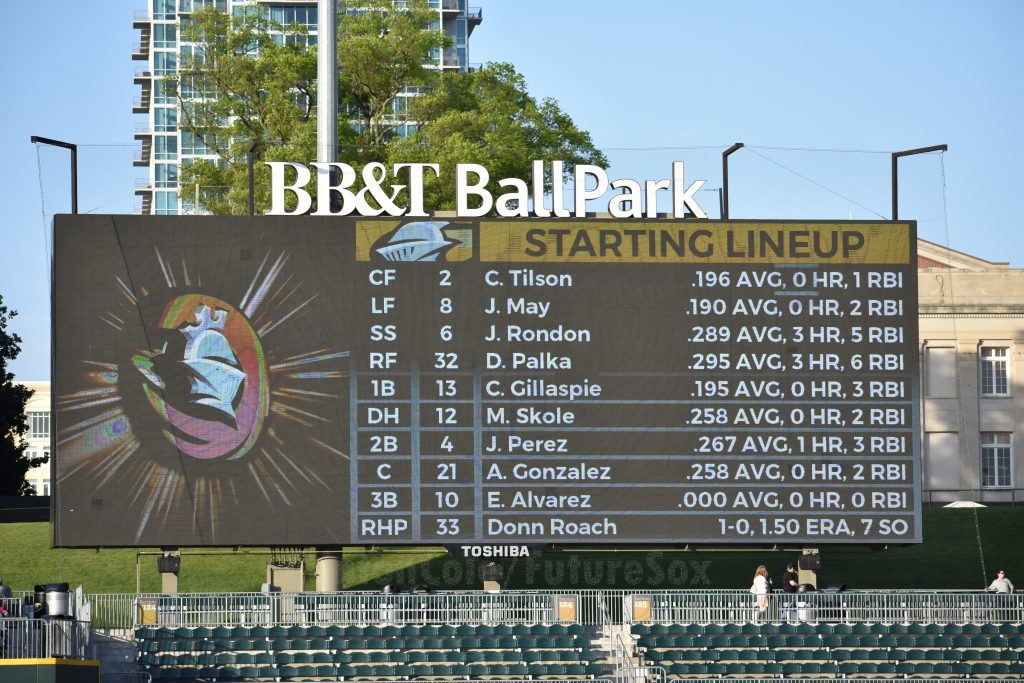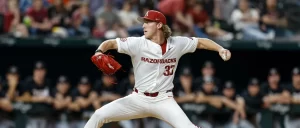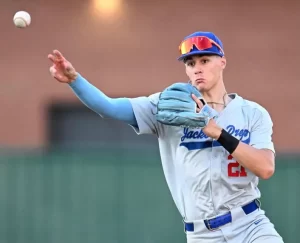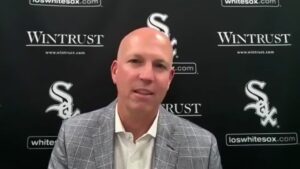2020 MLB Mock Draft 2.0

via clinton cole
1,200 players were taken in the 2019 Major League Baseball Draft. In this year’s version, 160 players will be chosen and added to clubs’ respective farm systems. The 2020 Draft will take place on the originally scheduled date of Wednesday June 10th. The first round will take place on night one with rounds two-through-five taking place the following evening on Thursday June 11th.
A 40-round draft has been commonplace for the past decade but that’s going to change going forward. In 2020, the draft will be just five rounds but it will be 20 rounds in total after this year. I detailed the rules of this latest iteration last week. Bonus pool amounts will be commensurate with the same slot values as 2019 and owners will defer the majority of signing bonuses until later years. Every drafted player will receive no more than $100,000 up front with the remaining bonus amount to be paid in equal installments coming in 2021 and 2022.
The shortened draft will affect high schoolers and college juniors the most but the majority of the top talent will still be selected and sign on to become professional baseball players. Scouting operations had been on hold and clubs were in limbo since the shutdown. Players are now allowed to update video and share workouts on a central database that all clubs can access. Teams can schedule and participate in meetings remotely with draft-eligible prospects as well.
The Chicago White Sox will have five selections and a bonus pool totaling $7,744,700 to use on those five players. This is our second attempt at mocking the first round. Mock Draft 1.0 can be read here.
1. Detroit Tigers: Spencer Torkelson 1B Arizona State
Torkelson is 6’1″ and 205 pounds with a right/right profile at first base. He would be the first such player to go first overall but in times like these, he’s the safest selection for Al Avila. Torkelson has plus raw power and enough of a hit tool to project as a difference maker in the middle of a big league lineup in the future. They could look to cut a deal with a non-Boras client here but Tork seems to be the heavy favorite.
2. Baltimore Orioles: Nick Gonzales 2B New Mexico State
Gonzales is a young junior who has hit everywhere he’s been. There are some concerns over inflated stats due to the environment in which he plays, but he was stellar in Cape Cod as well. The 5’10” 190 pounder is an average defender at second with potent offensive potential. This move allows the Orioles to save some money for later with two more picks in the top 40 of this draft.
3. Miami Marlins: Austin Martin 3B/OF Vanderbilt
The Marlins front office is very familiar with Martin and took his Commodore teammate JJ Bleday last year. Martin has played all over the diamond and is the best college hitter in the class. He’s also a twitchy athlete with positional flexibility and very few flaws in his game. The Boras client could go higher than this but he should settle in no further than here.
4. Kansas City Royals: Zac Veen OF Spruce Creek HS (FL)
6’5″ lefty slugger with a commitment to Florida. Veen has a chance for five above average tools with excellent raw power as his current carrying tool. He profiles as a corner outfielder, but could start in center initially. The Royals have been linked to this prep star lately and he’s the best high school player in this class.
5. Toronto Blue Jays: Asa Lacy LHP Texas A&M
This is the best case scenario for Toronto in this instance. Position players pushed the top pitchers down the board and the Jays will benefit. Lacy is a 6’4″ 215 pound southpaw that projects at the top of a rotation. He could be the fastest moving pitcher in the class.
6. Seattle Mariners: Emerson Hancock RHP Georgia
The Mariners are a “draft model and data” team so they could shy away from Hancock due to his lack of strikeouts but I felt he was too good to pass up at this point. The 6’4″ right hander was the favorite to go #1 overall a few months ago and he is definitely an option to go higher. He might be the best college pitcher in the draft class.
7. Pittsburgh Pirates: Patrick Bailey C North Carolina State
This is a rumored landing spot for Bailey if he’s willing to take an under-slot deal. Bailey is a young junior and the top college catcher in the class. He is more power than hit and is a switch-hitter with solid raw power. Bailey is a solid defender but has a lack of wood bat success in the summer.
8. San Diego Padres: Max Meyer RHP Minnesota
The Padres aren’t afraid to take prep players and they could choose to go that route again this year. Ultimately, I felt that Meyer was too good to leave on the board any longer. Meyer is 6’0″ right hander with a plus fastball and the best slider in the draft class. He’s a quality athlete that can repeat a fluid delivery despite the size. He will be the first Minnesota 1st rounder since 2004.
9. Colorado Rockies: Robert Hassell OF Independence HS (TN)
The Rockies only take pitchers that throw sinkers and the board dictates that they should take a hitter here in regards to their draft strategy. Was the most consistent bat on the USA Baseball 18U National Team last year. He shows stellar bat control. Hassell hits the ball hard and has developing power. Also shows a pretty left-handed stroke with great eye hand coordination. His bat and arm are his carrying tools and he could remain in centerfield.
10. Los Angeles Angels: Reid Detmers LHP Louisville
The best college pitcher left on the board is a pretty easy call for Billy Eppler and his staff in Anaheim. Detmers is a strong and durable southpaw that could move through the minors at a very quick pace. He doesn’t throw really hard but his plus curveball is a wipeout pitch and provided respectable strikeout totals this spring.
11. Chicago White Sox: Jared Kelley RHP Refugio HS (TX)
The White Sox haven’t drafted a prep pitcher in the first round since 2001 and haven’t drafted a high school player in general since Courtney Hawkins back in 2012. The right-handed high school pitcher is the riskiest demographic but the scouting department takes the plunge here. Kelley might be the best prep pitcher in the class. He’s a physical 6’3″ 215 pound righty with consistent fastball velocity and stellar command and control.
12. Cincinnati Reds: Cade Cavalli RHP Oklahoma
Cavalli is a 6’4″ 225 pound righty with easy velocity. His fastball sits 92-96 and touches 98 at times. He also possesses a plus curveball and the makings of a solid changeup. The Sooner starter shows frontline starter upside but needs to work on his command and stay healthy. Should be a nice addition for Kyle Boddy in Cincinnati.
13. San Francisco Giants: Austin Hendrick OF West Allegheny HS (PA)
Hendrick is a 19-year-old lefty with a great hit and power combination. The Pennsylvania prep product is a corner guy with massive raw power and bat speed. Might have the best combination of hit and power in the prep class. San Francisco is equipped with seven picks in this draft and can afford the high price tag.
14. Texas Rangers: Garrett Crochet LHP Tennessee
Crochet was shutdown for a bit this fall but made it back shortly before everything stopped. The 6’6″ 220 pound southpaw sits 96-100 mph with his fastball and shows very high spin rates. Crochet also possesses a plus slider with an above average changeup. He has a solid delivery with clean arm action as well.
15. Philadelphia Phillies: Heston Kjerstad OF Arkansas
One of the best power bats in the draft class. The 6’3″ 200 pounder also had great success with Team USA in the summer and has shown elite ability with wood bats. Kjerstad isn’t a great defender but shows a strong and accurate arm in a corner outfield spot. Philadelphia has been pretty college heavy in the first round of late.
16. Chicago Cubs: Tanner Burns RHP Auburn
Another 6’0″ righty and Burns has had some injury history in college. He locates a mid 90’s fastball well though and also possesses a plus breaking ball. He’s a strong and athletic right hander with his only flaw being prototypical size. He’s drawn some comparisons to former Vanderbilt and current Cincinnati starter Sonny Gray. Burns is the first selection of the Dan Kantrovitz era in Chicago.
17. Boston Red Sox: Mick Abel RHP Jesuit HS (OR)
Abel is a 6’5″ 180 pound Oregon State commitment and the first selection of the Chaim Bloom era in Boston. He possesses present stuff, future projection and pitchability. His fastball sits in the mid 90’s and he flashes three plus pitches. Abel is lauded for great maturity and makeup as well.
18. Arizona Diamondbacks: Pete Crow-Armstrong OF Harvard Westlake HS (CA)
18-year-old with a L/L profile is the latest star from Harvard Westlake High School. Crow-Armstrong makes loud, hard contact despite some swing and miss in his game. He’s more hit than power currently but the dynamic athlete provides stellar defense in centerfield.
19. New York Mets: Carmen Mlodzinski RHP South Carolina
After taking some prep players in 2019, the Mets decide on a safer college arm in a great class for 2020. Mlodzinski is a 6’2″ 230 pound righty that looked exceptional in the Cape Cod League over the summer. His fastball reaches 99 mph and he has the chance for three plus pitches. He is athletic with some repeatability issues.
20. Milwaukee Brewers: Garrett Mitchell OF UCLA
Brewers follow their recent game plan and take another college prospect. The 6’3″ 205 lefty was a prep standout three years ago that made it to UCLA ultimately. Mitchell is a toolshed with plus-plus speed, a plus arm and defense to go along with 70-grade raw power. Mitchell has played with Type 1 diabetes which could factor in for some clubs.
21. St. Louis Cardinals: Ed Howard SS Mt. Carmel HS (IL)
The 6’2″ 185 pounder is the best prep shortstop in the 2020 class. Howard was a member of the Jackie Robinson West Little League Team and was also a member of the White Sox’s ACE program. Howard shows impressive bat speed with a projectable frame. He’s very athletic and will stay at shortstop long-term. He could be of interest to both Chicago teams but a shoulder injury and a lack of playing this spring pushes him down the board.
22. Washington Nationals: Cole Wilcox RHP Georgia
Wilcox is a draft-eligible sophomore who is likely to go in round one. The 20-year-old has great stuff with a fastball in the 93-97 mph range and the chance at three plus offerings. Wilcox is athletic with a strong frame but possesses some reliever risk in his profile. The Nationals are never afraid of taking chances on high upside pitching.
23. Cleveland Indians: Dillon Dingler C Ohio State
Dingler has been linked to the Indians and Yankees and the 6’3″ 210 pounder converted to catcher recently. He possesses an above average arm and accuracy and oozes extreme athleticism. Dingler played centerfield for the Buckeyes last year. He also has plus raw power and controls the strike zone at the dish.
24. Tampa Bay Rays: Tyler Soderstrom C Turlock HS (CA)
The 6’2 200 pounder is one of the best prep hitters in the class and Tampa Bay has the funds to afford him. Soderstrom is an athletic, left-handed hitting backstop that may have to move off the position long-term. He’s very polished with a solid offensive approach. He is committed to UCLA.
25. Atlanta Braves: Slade Cecconi RHP Miami
Cecconi is a draft-eligible Sophomore with a strong, durable frame. He has good stuff and gets his fastball up to 96 mph regularly. He does lose the velocity at times deep in starts and there’s some reliever risk in the profile. The 6’4″ 220 pounder comes with lots of upside due to age, stuff and arm strength though.
26. Oakland Athletics: Nick Loftin SS Baylor
Loftin is the first college shortstop off the board and he’s a high floor prospect. He doesn’t have loud tools but he should stay at shortstop long-term with the ability to play second or third as well. Power isn’t his calling card but he has some pop despite relying on being more a line drive hitter that doesn’t strikeout often.
27. Minnesota Twins: Jordan Westburg SS Mississippi State
At 6’3″ 190 pounds, he’s a big shortstop. He should stay at the position but has the profile for third base if necessary. Westburg has a compact, right-handed swing capable of producing 20 homer seasons in the future. He’s very aggressive and tries to pull the ball frequently and he also had some success in the Cape Cod League last summer.
28. New York Yankees: Bobby Miller RHP Louisville
Miller is a 6’5″ 220 pound righty. He’s big and physical and profiles as a workhorse starter. His power stuff is generally on display with an upper 90’s fastball as his calling card. He’s been linked to the Yankees during the draft process and New York needs to hit on their picks with only three in the 2020 draft.
29. Los Angeles Dodgers: Justin Foscue 2B Mississippi State
The Dodgers have loaded up on college bats lately and continue the trend with Foscue here. He’s an offensive minded second baseman with strength, bat speed and a pull heavy approach. Foscue projects to hit 20 homers on an annual basis but he’ll likely strikeout a ton as well. He’s just average at 2B and could move to 3B potentially if necessary.
Competitive Balance Round A
30. Baltimore Orioles: Nick Bitsko RHP Central Bucks East HS (PA)
Bitsko reclassified to enter the 2020 draft class instead of being old for the 2021 class. The Virginia commit has a physical 6’4″ 220 pound frame and looks the part of a frontline starter. Bitsko has a clean delivery and his fastball and curveball have plus potential. The Orioles saved money on Nick Gonzales at #2 with this idea in mind.
31. Pittsburgh Pirates: Bryce Jarvis RHP Duke
Jarvis added 20 pounds to his 6″2″ frame and he was outstanding this spring. His fastball sat 92-96 mph and he shows a plus curveball and well above-average changeup to go with it. Jarvis is already 22-year-old and could move fairly quickly in a starting role.
32. Kansas City Royals: Austin Wells C Arizona
Wells is a draft-eligible sophomore after a stellar performance in the Cape Cod League. He’s a left-handed hitter with power to all fields and draws lots of walks. He does have some defensive questions but could adequately handle 1B or LF.
33. Arizona Diamondbacks: Chris McMahon RHP Miami
The 6’2″ 205 pounder profiles as a mid-rotation starter and was great with the U.S. National Team last summer. His fastball gets up to 98 and he has a good changeup as well. McMahon shows athleticism, stuff and feel but sometimes gets hit more than he should with the combo he displays.
34. San Diego Padres: Dax Fulton LHP Mustang HS (OK)
18-year-old is the best high school lefty in the 2020 class. He didn’t pitch at all this spring after undergoing Tommy John surgery in September. He was 90-93 with his fastball but has room to add more strength to his 6’6″ 225 pound frame. He also possesses a plus curveball and an average changeup. He’s committed to Oklahoma but the Padres get him signed here.
35. Colorado Rockies: Nick Swiney LHP North Carolina State
This was his first year as a starter for the Wolfpack and the 21-year-old showed a fastball in the 87-93 mph range. His curveball has flashed plus as well and the he has the makings of an outstanding changeup too. He’s a 6’3″ 190 pound southpaw with room to add.
36. Cleveland Indians: Jordan Walker 3B Decatur HS (GA)
Walker is a 6’5″ 220 pound corner infielder with easy bat speed and plus raw power. He also turns 18 this week and will fit into Cleveland’s models on age without question. He’s athletic for his size but could end up in an outfield corner in the future. He’s one of Duke’s best recruits ever.
37. Tampa Bay Rays: C.J. Van Eyk RHP Florida State
The 21-year-old shows a solid three-pitch mix and he really knows how to locate his 93-95 mph fastball. Van Eyk has a great feel to pitch and he could move quickly through the Rays’ system.
Photo credit: Clinton Cole/FutureSox
Want to know right away when we publish a new article? Type your email address in the box on the right-side bar (or at the bottom, if on a mobile device) and click the “Subscribe” button. Our list is completely spam free, and you can opt out at any time. Also, consider supporting FutureSox on Patreon! You can get early access to special articles and Patreon-only posts, in addition to more benefits you can read about here. Shop our exclusive merchandise! Show your support with the latest FutureSox apparel.







5 thoughts on “2020 MLB Mock Draft 2.0”
Comments are closed.